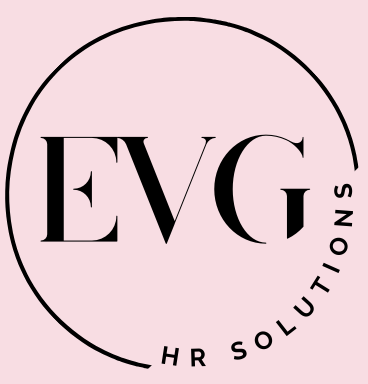What gets measured, gets managed—especially when it comes to your team.
As a small business owner, you wear many hats. Sales, marketing, operations—and yes, even HR. But when you’re running a lean team, tracking HR metrics may feel like a luxury. The truth is, even if you don’t have a formal HR department, monitoring a few basic metrics can make a major impact on your team’s performance, satisfaction, and long-term growth.
This post is designed to make HR data approachable, tool-agnostic, and easy to implement—regardless of your experience level. You’ll learn:
- Why HR metrics matter
- Key metrics you can begin tracking today
- How often to review them
- What insights they offer
Why HR Metrics Matter (Even for a Small Team)
HR metrics help you make informed, confident decisions about your workforce. They’re not just numbers—they’re signals. Signals that show what’s working, where challenges are emerging, and where improvements can be made.
Tracking HR data allows you to:
- Anticipate staffing needs
- Improve hiring and retention outcomes
- Reduce costly turnover
- Strengthen employee engagement
- Align people strategy with business goals
Even if you have fewer than 10 employees, paying attention to a few key data points can help you run your business more effectively and prepare for future growth.
1. Time to Hire
Definition: The number of days between posting a job and a candidate accepting the offer.
Why it matters: A lengthy hiring process can lead to lost productivity, candidate drop-off, and strain on your existing team.
When to track: Every time a role is filled.
Tip: Watch for trends. If time to hire is increasing, you may need to revisit your job descriptions, hiring process, or sourcing strategy.
2. Cost Per Hire
Definition: The total cost involved in filling a position—including advertising, tools, recruiter fees, and internal time.
Why it matters: Helps you evaluate the efficiency of your hiring process and understand return on investment.
When to track: Per hire; review quarterly or annually.
Suggestion: Include both direct costs (e.g., job postings) and indirect costs (e.g., hours spent interviewing).
3. Employee Turnover Rate
Definition: The percentage of employees who leave your company during a specific period.
Why it matters: High turnover can be a warning sign of things organization/operational issues likes poor job fit, lack of support, or culture misalignment. It also comes at a cost.
📊 Did you know? According to the Society for Human Resource Management (SHRM), the average cost-per-hire is nearly $4,700, though many employers estimate the total cost to hire a new employee can be three to four times the position’s salary when factoring in productivity loss, training, and onboarding costs
When to track: Monthly or quarterly.
Goal: Understand your baseline and look for ways to improve. Aim to keep annual turnover between 10-15% for most small teams.
4. Retention Rate
Definition: The percentage of employees who remain employed over a set period.
Why it matters: A high retention rate signals stability and satisfaction, particularly in the first year of employment.
When to track: Annually or every six months.
Tip: If many employees leave within the first 90 days, it may be time to improve your onboarding process.
5. Absenteeism Rate
Definition: The rate of unscheduled absences (excluding vacation or approved leave).
Why it matters: Excessive absenteeism can indicate disengagement, burnout, or underlying organizational issues.
When to track: Monthly or quarterly.
Watch for: Patterns such as frequent Monday absences or absenteeism concentrated in specific roles or teams.
6. Offer Acceptance Rate
Definition: The percentage of job offers that are accepted by candidates.
Why it matters: A low acceptance rate could point to compensation issues, lack of clarity in the job description, or poor candidate experience.
When to track: After each hiring cycle.
Benchmark: A healthy offer acceptance rate is typically 90% or higher.
7. New Hire Satisfaction
Definition: Feedback gathered from employees during their first 30 to 90 days.
Why it matters: Early feedback can help you improve onboarding, identify support gaps, and prevent early turnover.
When to track: After each new hire completes 30 or 60 days.
How: Use a short survey or schedule a brief, informal check-in.
8. Training Completion Rate
Definition: The percentage of employees who complete required training within a designated timeframe.
Why it matters: Supports compliance, safety, and performance expectations—especially in regulated industries.
When to track: After each training cycle or quarterly.
Suggestion: Keep a simple log and follow up on incomplete training to prevent compliance issues.
9. Employee Productivity (Simple Output)
Definition: A high-level view of employee output—typically measured in projects completed, hours billed, or deliverables met.
Why it matters: Helps set realistic expectations and track workload distribution, particularly in project- or client-based businesses.
When to track: Monthly or per project.
Note: Productivity should be measured thoughtfully and aligned with job expectations—not used to micromanage.
10. Payroll as a Percentage of Revenue
Definition: Total payroll divided by total business revenue, expressed as a percentage.
Why it matters: Helps assess whether staffing costs are sustainable and aligned with business growth.
When to track: Monthly or quarterly.
Benchmark: Typically ranges between 15% and 30% for small service-based businesses, depending on your industry.
How Often Should You Review These Metrics?
If you’re just starting out, begin by tracking a few key metrics—like turnover, time to hire, and offer acceptance rate—on a monthly or quarterly basis. As your business and team grow, you can expand your tracking to include the full list above.
Consistency is more important than perfection. Even a simple spreadsheet can give you the insight you need to make better decisions.
Final Thoughts
You don’t need to be an HR expert to make informed decisions about your team. By monitoring a few simple HR metrics, you can spot issues early, improve processes, and build a workplace where people thrive.
Remember: HR is not just about hiring and paperwork. It’s about creating a strong foundation for your people—and your business. And it all starts with paying attention to the numbers that matter.
